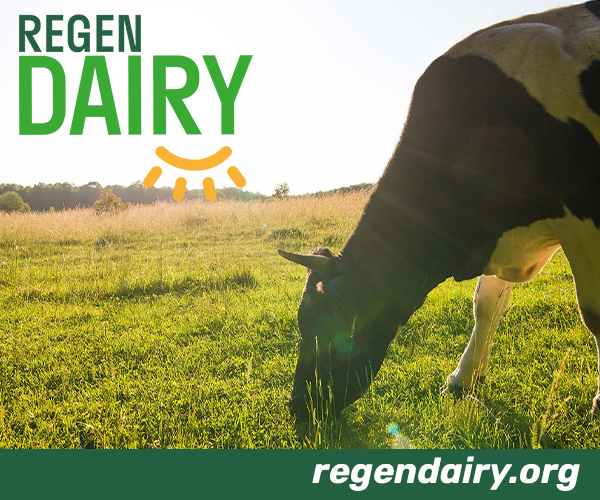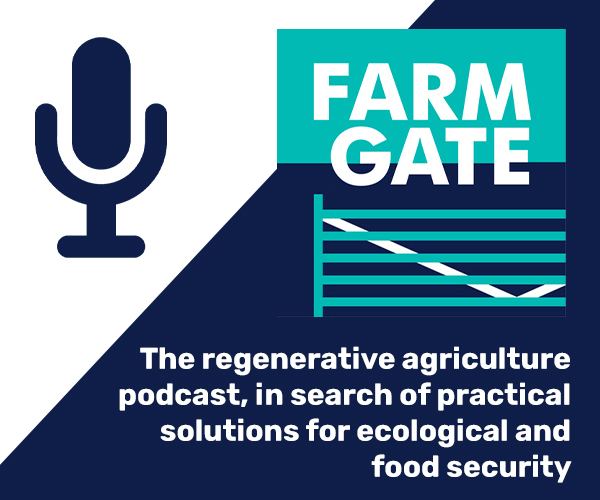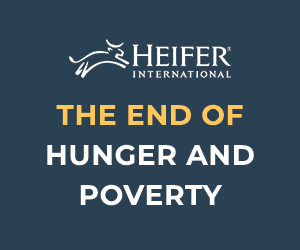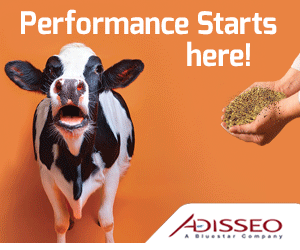



Weekly Australian Cattle Summary
AUSTRALIA - This report is a collection of weekly cattle price summaries from each Australian state by the Meat & Livestock Australia.
Victoria weekly cattle summary
Lower supply
Even though the supply of cattle fell overall at MLA’s NLRS reported centres, decrease at some markets created even to dearer trends, and others a larger supply aided some cheaper prices. Also factored in was the timing with some markets at the end of the week affected by increases in some classes of cattle. Across the board young cattle prices were mostly unchanged to 7c/kg cheaper, but some of the price falls were created by an unusual situation that occurred in some Gippsland sales. A private bulk billing company, operating at three Gippsland sales is acting on behalf of all bar two of the agents involved at these markets, which officially commenced this week. With the trading terms a maximum of ten days, some buyers could not operate in all agents sales, and this affected prices on limited classes of cattle. This along with weaker demand later in the week saw the Eastern Young Cattle Indicator (EYCI) slip 3c from last week, to 308.50c/kg cwt.
Grown cattle sales met with mixed results, as quality, supply and demand varied throughout all selling centres reported by the NLRS. Grown steers have sold well, particularly at Leongatha where another large penning of good to very good quality assisted in higher prices, despite less competition. However, the much larger supply of cows, once again mostly in Gippsland, led to cheaper prices, especially at Bairnsdale. Very poor conditions leading into winter has led to further culling of some herds, and the poor nature of most of these cows, and weaker competition saw price fall on Wednesday and Thursday.
Cheaper prices
While top quality vealer prices remained high making up to 239c, and supplementary fed yearling made to 220c, most vealer and yearling prices from 138c to 195c/kg were firm to 10c/kg cheaper. The larger focus was on heavier yearling steers, and medium and prime bullocks. While most sales recorded prices of C3 and C4 steers at 150c to 170c/kg, very good quality and strong demand at Pakenham and Leongatha saw the best quality make to 178c/kg. However, the overall dearer trend was caused by the number of pens that made from 162c to 178c/kg. This was a very good result, given that the one South Australian company that has supported these sales the previous two weeks was not present.
Approximately 2,300 of the 4,300 cows sold at MLA’s NLRS reported saleyards were sold in Gippsland, and most on the last two sale days of the week. Like most sales, the quality was quite poor with the largest percentage being poor and very poor condition 1 score beef and dairy cows. This, coupled with weakening demand led to a drop I the average carcass weight price to 245c/kg. Heavier and better quality cows made from 118c to 138c with others anywhere between 50c and 115c/kg.
SA weekly cattle summary
Slightly Smaller Yardings
It could have arrived, the time when cattle supplies finally decline. There were less numbers at SA LE, with Naracoorte’s numbers slipping by 239 head that also featured nearly 50% of the total being cows. Mt. Gambier had a yarding that went against the trend with extra cattle penned with a very plain quality yarding of young cattle.
Overall, quality was quite mixed on all categories, however despite this there was solid competition emanating from the usual buyers, although a Victorian operator was absent at the SA LE. There were a couple of buyers at Naracoorte and Mt. Gambier that were stifled by the lack of quality suitable to their requirements and could only source limited numbers. Despite a stronger A$, cows sold to solid Victorian and South East SA processor competition, with the latter sourcing a large percentage of the cows offered at Naracoorte and Mt. Gambier. Most cows attracted a dearer trend, with only very plain beef and dairy 1 scores failing to sell above 100¢/kg. Grown steer numbers remain reasonably low at present, however with a slip in quality and a couple of buyers operating sparodically, prices tended to retreat.
Fewer vealers are being sold at present, although 2008 spring drops should start to appear in June, or early in the new financial year. Most vealer and yearling steers and heifers being sourced by very strong feeder and restocker activity at mainly dearer levels despite the wide range of quality offered. However, supplementary fed steers and heifers on small numbers were keenly sourced by wholesalers at mainly dearer levels.
Varying Trends
With the varying quality offered, most vealer steers were sourced by feeder and restocker orders at prices between 150¢ and 186¢, or 3¢ to 7¢/kg dearer. Trade and local butcher purchases were quite limited, and ranged from 178¢ to 210¢ at rates 1¢ to 9¢/kg cheaper. Vealer heifers to feeder and restocker interests ranged from 143¢ to 179¢, with most sales 4¢ to 8¢/kg dearer. Few C3 heifers were available, with the trade sourcing C2 and D3 heifers to fill orders from 154¢ to 198¢, or unchanged to 3¢ dearer, and up to 12¢/kg cheaper. Yearling steers were generally 2¢ to 5¢ cheaper with trade purchases 155¢ to 206¢, while feeders and restockers paid from 140¢ to 193¢ over a wide range of quality. Yearling heifers followed suit with some sales dearer and others cheaper to a wide mix of orders mainly between 136¢ and 192¢/kg, with supplementary feds at the higher end of both categories.
Grown steers were around 5¢ cheaper, with C3 and C4 sales between 154¢ and 175¢ and averaging 305¢/kg statewide. Most cows were 1¢ to 5¢ dearer, with most 2 to 5 scores selling between 112¢ and 141¢, or 245¢ to 280¢/kg cwt.
WA weekly cattle summary
Supply levels remain healthy
Conducive conditions in the pastoral areas in the north of WA for mustering continue to increase and consequently live export activity has risen accordingly. The very dry conditions in the southern Ag districts of WA have remained unchanged and continue to hampered both cropping and cattle stocking capabilities for producers. An end may be in sight with forecasts for the middle of next week indicating that their may be some relief in sight and perhaps even enough to bring a break to the season. Feed levels in the cast majority of districts are extremely low with only areas in the far sought coastal regions having any real levels of green feed. With temperatures dropping and a cooling off of the solid temperatures producers are now desperately hoping for a reasonable rain to start a germination and growth before winter colds set in. Calving levels have risen in recent weeks with the majority of herds now having some levels of calves on the ground. This has also increased the need for supplementary feeding which remains a major daily exercise for producers.
The dry conditions again influenced turn off levels of cattle into saleyards, with the Great Southern yards having the largest May Yarding since the inception of the new yards, almost ten years ago. Midland’s numbers were also very healthy and this should be maintained with an expected increase in the volumes of pastoral cattle forwarded into this market in the near future, while the southwest’s sale remained the smallest of the usual weekly trade sales as would be seasonally expected.
Store rates revived
Vealer supplies outside of calf weights continue to be minimal and there remains little change in the values of these. Trade weight grass and grain finished yearling steer and heifer supplies were lower his week with a plainer quality also evident. Subsequently the markets for both continued to struggle despite a continuation in recorded activity from both the local processing and feeder sectors. The dry conditions saw increased supplies of store cattle forwarded to market with larger numbers forth coming from the eastern regions of the Great Southern yard’s draw areas. Quality was improved in comparison to the previous week. An increased feeder demand was realised in heavier store classes of both steers and heifers and this had a positive effect on rates. Medium weight sales for both sexes were generally firm, while lightweight grades continued to struggle for demand compared to their heavier counterparts, despite a fair restocker interest again recorded.
Heavy weight steer and heifer supplies remained tight with demand reasonably firm from the processing and restocker sectors. Another strong demand was realised in heavy weight cow and bull classes from export and domestic processors, which continued to seen buoyant and firm costings for both classes.
NSW weekly cattle summary
Supply slips back
Throughput across MLA’s NLRS reported saleyards declined 5% from the previous week with the majority of all markets contributing to the trend. Armidale and Gunnedah witnessed the greatest fall in numbers with an 18% and 29% reduction in throughput.
The fall in numbers was heavily implicated by a larger than normal yarding the previous week. However, with prices falling across the board, producers have been encouraged to hold on where possible, having detrimental effects on supplies. The various store markets in northern NSW has also attracted several young cattle away having a negative impact on prime market throughput.
Despite the majority of markets yarding fewer cattle, Dubbo and Forbes penned 49% and 47% more head of cattle. With the annual turn off period still in full swing, the cool weather and deteriorating season encouraged several more head onto the market.
Overall quality has diminished with plain cattle making up the largest proportion of offerings. The shift in quality and condition has largely reflected the turn in the season and cool weather. Producers have also been more inclined to hold onto well conditioned cattle and offload stragglers in order to secure feed supplies for quality lines over the winter period.
Fewer young cattle have been yarded in physical markets due to the recent and up coming store sales. Vealer steer throughput declined 25% while yearling steers dropped back by 6%. There were 11% more grown steers offered however cows made up the largest percentage of yardings with a 6% rise in numbers.
Prices depreciate
Lightweight C2 vealer steers to restockers lost 4¢ to average 168¢ while medium weights to similar orders ranged from 141¢ to 195¢/kg. Heavyweights returning to the paddock sold to a top of 194¢ to average close to 172¢/kg. Medium weight C2 feeder vealer heifers ranged form 140¢ to 171¢ while those to slaughter lost 2¢ to average 154¢/kg. Medium weight yearling steers to feeders ranged from 135¢ to 180¢ while C3’s to slaughter lost 1¢ with sales to 176¢/kg. Heavyweights to feeder orders sold to 184¢ to average close to 172¢/kg. Lightweight C2 yearling heifers ranged from 130¢ to 171¢ while medium weights to slaughter held firm at 160¢/kg.
Medium weight grown steers to feeders ranged from 144¢ to 165¢ while heavyweight C3’s to processors sold to 168¢ to average 153¢/kg. Well finished bullocks ranged from 142¢ to 172¢ to average 1¢ cheaper at 158¢/kg. Medium weight grown heifers to slaughter sold to 163¢ to average close to 142¢/kg. Lightweight D2 cows ranged from 85¢ to 118¢ while medium weights sold to 125¢ to average 107¢/kg. The D3’s to slaughter averaged 3¢ cheaper at 118¢ while well finished heavyweights ranged from 110¢ to 137¢ to average 125¢/kg.
QLD weekly cattle summary
Supply remains unchanged
Despite the re-entry of Toowoomba back into the selling program following the public holiday the previous week, overall supply at physical markets covered by MLAs NLRS remained generally unchanged. Apart from some markets in the southeast of the state recording increased numbers, supply at the remainder tended to taper off. Due to the recent fall in prices combined with scattered showers in the supply area, throughput at Longreach dropped back considerably. The quality of the cattle was mixed and well finish lines were hard to come by. Plain store cattle predominantly from the north dominated the market which in turn encouraged cheaper prices. Dry weather continues in the supply area around Warwick. The deteriorating season was reflected in the overall quality of the yarding, with only small samples of well presented lines, and increasing numbers of plain condition grades. Young cattle generally met a cheaper market, however greater losses would have occurred without the support of feeder operators and restockers. The only category to escape the downward trend was slaughter grades of vealer heifers, with the largest samples remaining very close to the previous week’s level.
A full field of export buyers were in attendance at Dalby and heavy steers to export slaughter generally maintained a firm market while bullocks only experienced a small loss of 2¢/kg. Nevertheless cows suffered price reductions of up to 12¢/kg. Despite some interest from restockers plain condition grades of cows tended to take the brunt of the falls, with very limited interest from southern processors, while good heavy cows were cheaper price falls were generally around 3¢ to 6¢/kg.
Most categories cheaper
Calves to the trade averaged 8¢ cheaper at 153¢, while restocker lines fell by 7¢ to average 169¢ with sales to 209.2¢/kg. The largest numbers of vealer steers sold to feeder operators 11¢ easier at 180¢ with the very occasional sale to restockers at 210.2¢/kg. A large sample of vealer heifers sold to the trade at close to firm at 153¢, while some selected lines sold to local butchers at 189.2¢/kg. Feeder buyers secured the majority of the yearling steers 6¢ to 8¢ cheaper, with the C2s on 159¢ and C3s mostly around 167¢ with sales to 177.2¢/kg. Yearling heifers to feed were well supplied and losses of feeder grades were confined to around 2¢ to average 153¢/kg. Lightweight slaughter lines lost up to 11¢ to average 144¢, while heavy grades to slaughter were 2¢ cheaper at 153¢ with sales to 180¢/kg.
Medium weight grown steers to feed averaged 5¢ less at 164¢ with some to 177.6¢/kg. Heavy steers to export slaughter met solid demand to average 161¢, while the bullock portion across all markets averaged 2¢ cheaper at 158¢/kg. Export heifers shared in the demand experienced for the heavy steers with some isolated sales to 156.2¢/kg to return $1020/head. Medium weight 2 score cows averaged 109¢ and 3 scores 121¢/kg. Good heavy cows mostly sold around 6¢ cheaper at 129¢ with the occasional sale to 142.2¢/kg.
TheCattleSite News Desk









